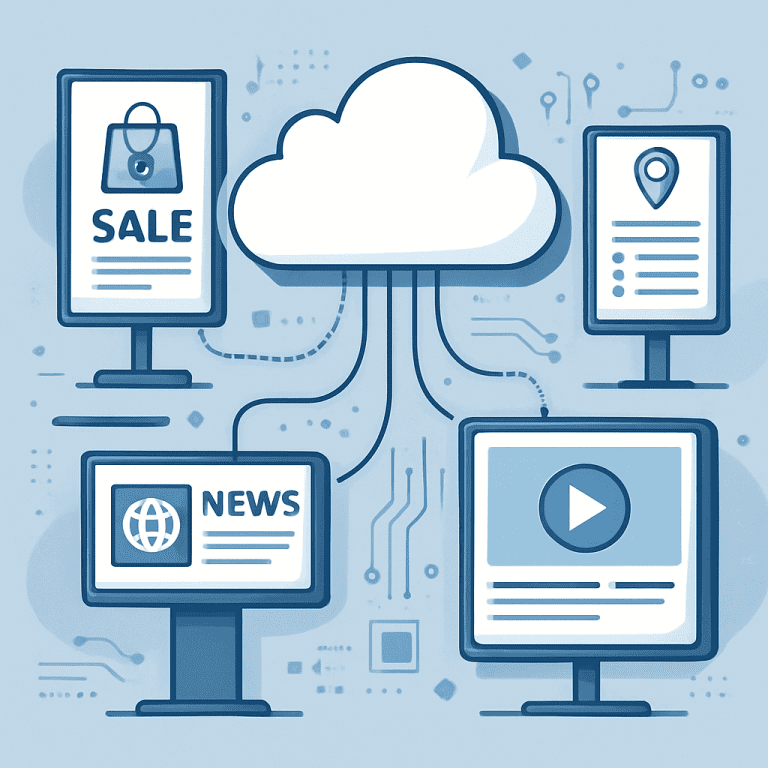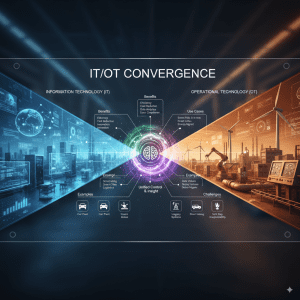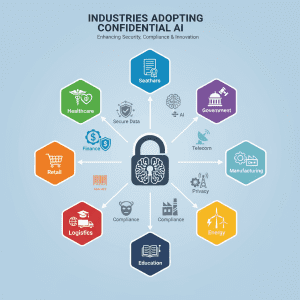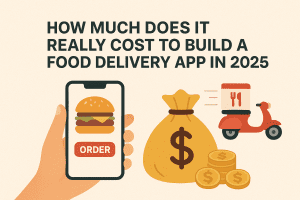Introduction
Cloud-powered digital signage platforms are revolutionizing how businesses deliver dynamic content, advertising, and real-time updates across locations. In 2025, leveraging the cloud means scalable,
displays—delivering engaging messages no matter the physical distance. However, building such a system requires careful cost analysis and planning. This post breaks down the main expenses involved and offers practical tips on key technological and strategic considerations for success.
Cost Breakdown for a Cloud Digital Signage Platform
-
Ideation & Planning
-
Brainstorming, feature specification, and specialist consultation
-
Typical cost: $500–$2,000
-
-
UI/UX Design
-
Visual design, multi-screen layout, user journey planning
-
Typical cost: $1,500–$5,000
-
-
Software Development
-
Core CMS/backend, cloud integration, scheduling, user management
-
Basic platform: $5,000–$15,000
-
Larger systems (with mobile apps, advanced analytics, custom integrations): Upwards of $30,000
-
-
App Store Submission
-
For companion mobile apps (if any)
-
Fees and adjustments: $100–$500
-
-
Hardware
-
Displays (per unit): $300–$1,500
-
Commercial media players: $30 (basic sticks) to $800+ (professional grade)
-
Wall mounts, cables: $20–$100 per screen
-
-
Software Licensing (if using SaaS or third-party CMS)
-
Subscription: $10–$20 per screen per month (most platforms)
-
One-time license: $500–$5,000
-
Enterprise/custom: Negotiable based on scale
-
-
Installation
-
Professional setup: $100–$500 per location
-
-
Maintenance & Updates
-
Annual: $99–$300 per display (support, updates, hosting)
-
Key Considerations Before You Build
-
Scalability: Choose modular architecture and cloud providers that allow smooth scaling as you add new screens and locations.
-
Content Management: Opt for a CMS that streamlines content upload, scheduling, approval, and integrates with live data (weather, news, social feeds).
-
Connectivity: Reliable bandwidth and backup connectivity are crucial to ensure uninterrupted signage content delivery.
-
Security: Enforce encryption, strong user authentication, and regular audits to protect sensitive data and the signage network.
-
Hardware Compatibility: Ensure displays and media players are compatible and future-proofed for new formats and integrations (Android, ChromeOS, Windows, etc.).
-
Cost Structure: Decide between SaaS (predictable subscription) and custom software (higher upfront, lower long-term costs for large deployments).
-
Ongoing Support: Budget for yearly updates, support contracts, and proactive monitoring to reduce downtime and optimize performance.
-
Content Creation: Factor in resources and tools for ongoing content design to maximize signage impact.
Conclusion
Building a cloud-powered digital signage platform in 2025 demands a clear-eyed approach to budgeting, tech stack selection, and system design. Expect a basic project to start around $10,000–$30,000 for software, with hardware and SaaS costs growing alongside your ambitions. Meticulous planning on security, connectivity, scalability, and content is vital. By choosing the right partners and defining your business goals early, you can build a resilient, efficient, and visually compelling signage network that drives engagement.
Ready to launch or upgrade your cloud signage strategy? Consult digital signage experts for a tailored cost estimate and platform roadmap.
FAQ
-
How much does it cost to build a basic cloud-powered signage platform?
-
Typically $10,000–$30,000 for software development, plus $300–$1,500 per display and $10–$20/month per screen for SaaS licensing.
-
-
What are the recurring costs?
-
Software subscriptions, annual support, content updates, and potential hardware upgrades make up the ongoing costs.
-
-
Can I use existing TVs or do I need specific hardware?
-
Commercial-grade displays and certified media players are strongly recommended for best performance and reliability.
-
-
What are the top challenges with cloud signage?
-
Ensuring network reliability, securing content, and creating engaging, relevant content regularly.
-
-
What features are must-haves for modern deployments?
-
Real-time updates, remote scheduling, analytics, multi-location management, and content integration with live feeds.
-
cloud digital signage, digital signage cost, signage platform development, cloud cms, digital signage hardware, SaaS signage platform, digital signage security, visual communications, signage content management, business displays











